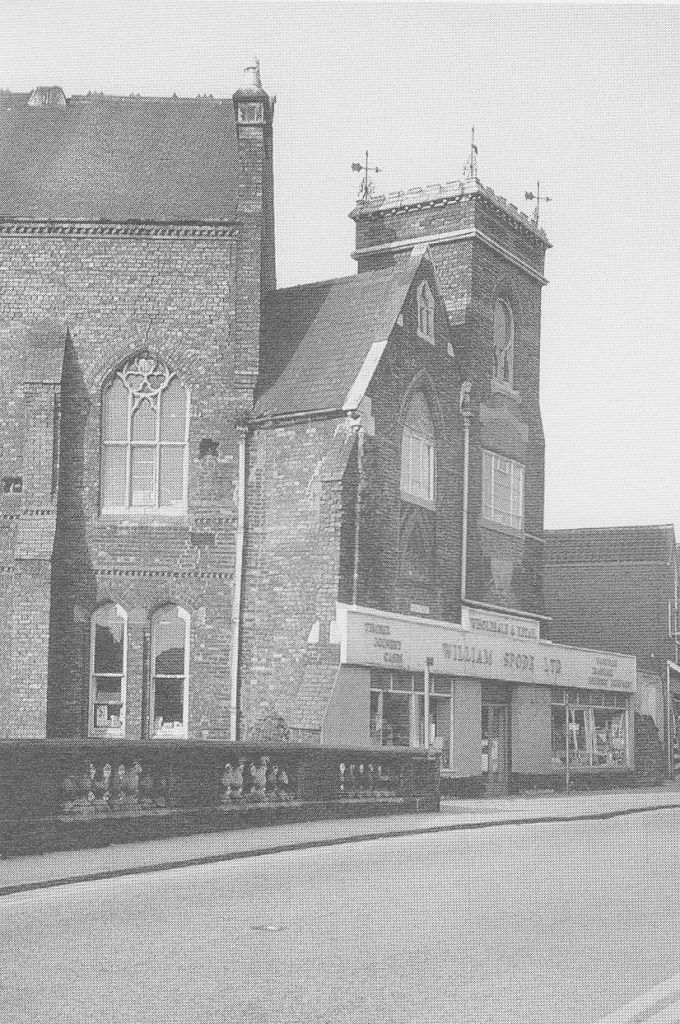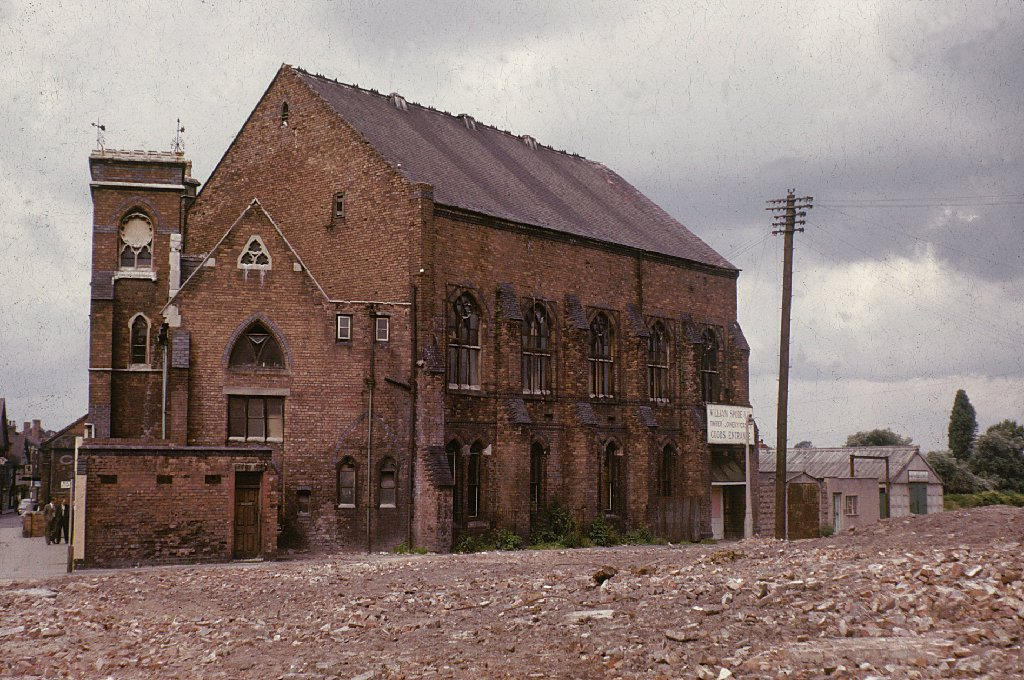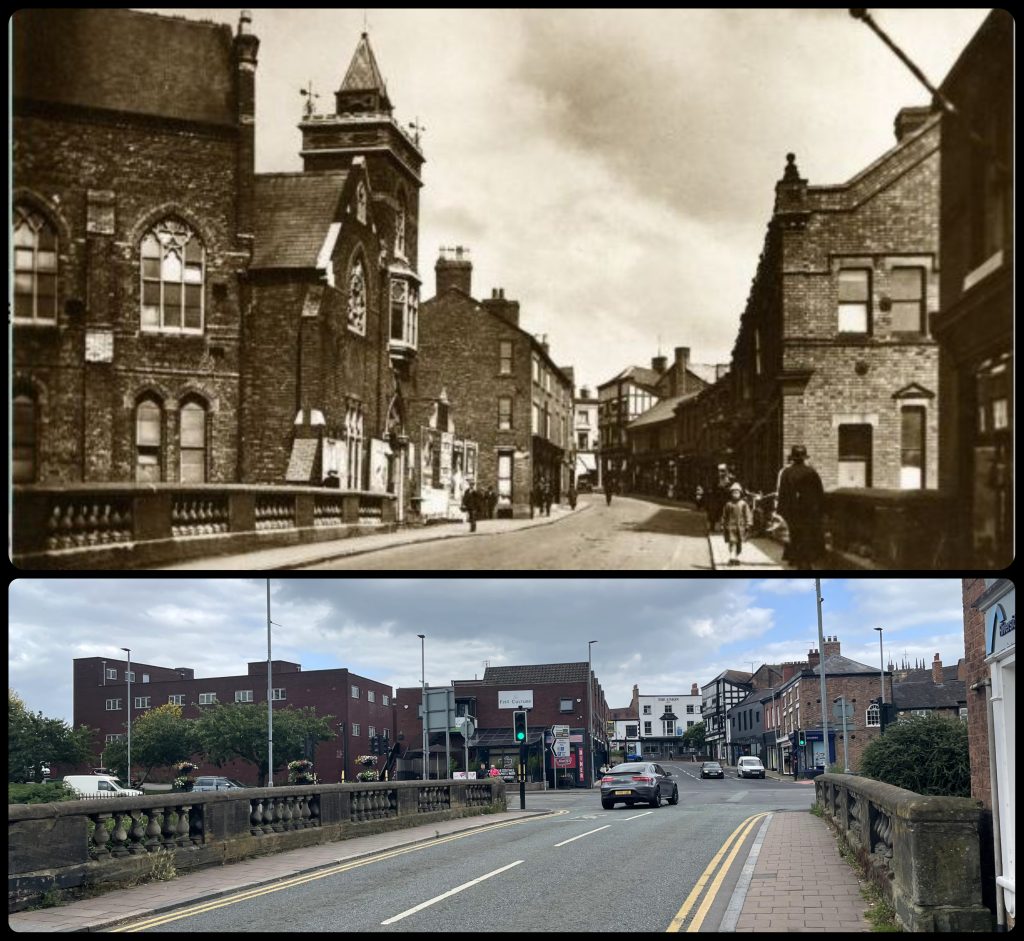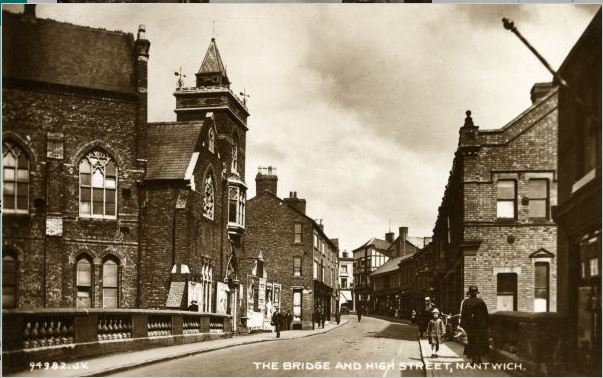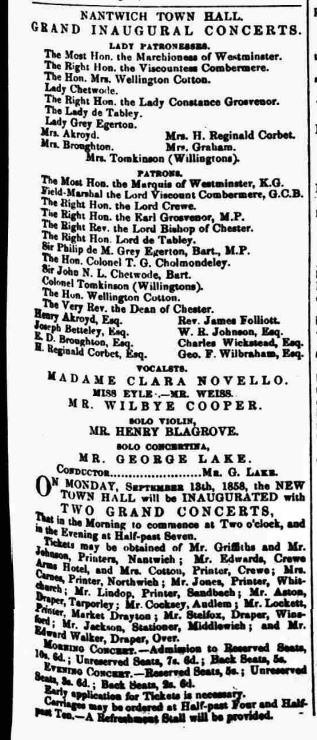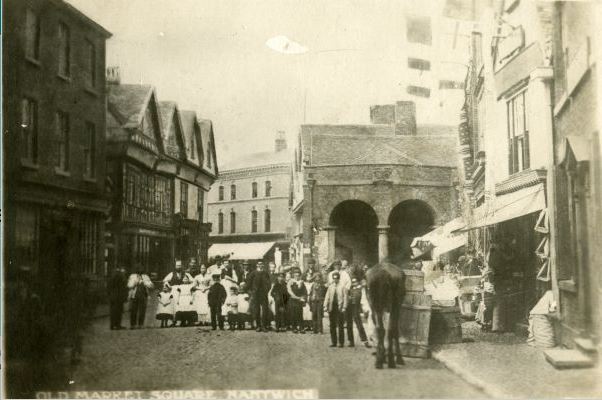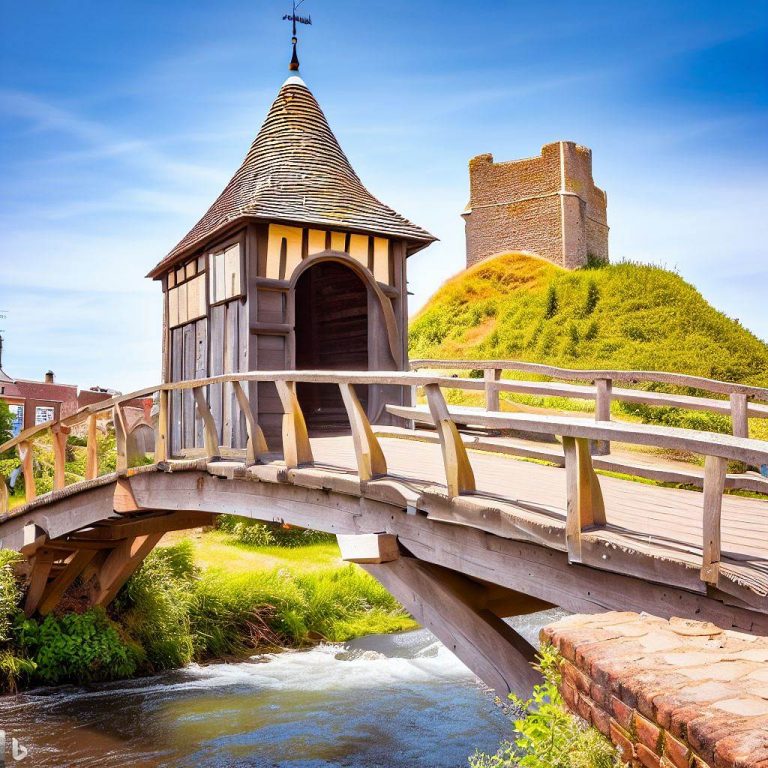Part One: “Players, conjurers and monstrosity mongers”
On 13th September 1858 and to much fanfare, the newly constructed Nantwich Town Hall was opened.
“The streets were decorated with mottoes and evergreens; and a high class concert was given, at which, amongst other artistes, Miss Clara Novello sang”.
James Hall, a local historian, writing in 1868 about the opening day of the new Town Hall.
The opening of the Hall was widely reported in the local and regional press.
“Monday, September 13th, will be for some time remembered as the day on which the Town Hall, (of which Nantwich has just reason to be proud) was formally opened”.
The Chester Observer, 18th September 1858
“The character of the erection is Gothic of the 14th Century and is carried out in blue and red bricks, with Bath stone dressings, having a square tower with stone staircases, pointed gables, high pitched roofs and dormers, forming altogether a picturesque building”.
“The ground floor contains a corn exchange 46 feet by 30 feet, with the addition of an open corridor next to the river, and also two committee rooms, a library, and residence for the hall-keeper; and the one pair plan gives an assembly- room, 63ft by 43ft, fitted up to accommodate about 600 persons, with ante-room for visitors, and private staircase, retiring rooms, and orchestra for performers”.
The Manchester Courier, 18th September 1858
The project was promoted by a group of locals who formed a sort of ‘not-for-profit’ company to further their aims. The £3,000 or so needed to purchase the land and construct the Hall was partially raised by the public; the rest being financed through loans.
The Chester Observer reported that before the Town Hall was built:
“Snow Hill was an ugly neglected patch of waste… Why it was left in so deplorable a condition in almost the very heart of the town’s bustle, nobody knew. Or if they knew they didn’t tell anybody; but it was so, this “very valuable building site,” as the auctioneer would say, was only an intramural playground, where every youngster had a right of common – where players, conjourors, and monstrosity-mongers periodically pitched their tents and invited a discerning public to witness within for a few pence, almost as much as they could see without for nothing.”
The Chester Observer, 16th October 1858.
They went on to say:
“Most heartily do we wish good speed to the Town Hall and as heartily thank its promoters in the name of interests of our common humanity”.
The Chester Observer, 16th October 1858.
Seven months later, at a meeting of friends and supporters, the management reported that 61 public meetings of various kinds had taken place in the large hall – an average of 2 per week and that :
“The mechanics institute and corn market had been accommodated, the lectures and concerts had been crowded to excess and the law had found a convenient place for the distribution of justice and punishment.”
Report given to friends and supporters of the town hall seven months after opening.
Things were going well it seems but unfortunately, it didn’t stay that way for long. Historian James Hall wrote in his account of the year 1868:
“The Town Hall, the greater part of which had been taken down on account of the insecure foundations, and rebuilt at a cost exceeding £1,050, was re-opened on 11th Aug in the same year”.
In a letter to the Chester Chronicle on 24th February 1872, the treasurer to the Hall trustees wrote of the difficulties now faced and explained that the reconstruction costs were £1,500 and the total debt on the Town Hall was now £1,850. He added:
“The present body of trustees etc, are feeling that sixteen years of toil and trouble without success in sight ought to rouse the ratepayers of Nantwich and bring them to their assistance; and unless this be so, they cannot see any other way for them but throwing up the scheme in despair.”
Treasurer to the Town Hall Trustees, letter to the Chester Chronicle 24th February 1872.
A few years later in April 1874, the Crewe Chronicle reported that a meeting of Nantwich rate payers was held at The Crown Hotel following the decision of the Nantwich Board (a precursor to local councils) to purchase the ailing Town Hall. The article describes a very heated meeting with heckling and accusations flying. The discussion focused on the outstanding debts which would become the rate payers liability on the transfer of the building and much was made of the building’s structure and foundations which were long known to be insufficient.
A Mr. Pooley stood up to speak, comparing the Local Board to the:
“man who purchased a cow because he wanted daily two-penny worth of milk. He should say “Buy the milk, and let someone else have the expense of keeping the cow!”
Mr Pooley, speaking at the meeting of rate-payers and quoted in the Crewe Chronicle, April 1874.
Winning much applause from the meeting!
A resolution was put to the meeting opposing the Local Board’s plan to purchase the Town Hall and it was passed “with much enthusiasm”.
A short while after, at a meeting of the Nantwich Local Board, the purchase of the Town Hall was discussed further in light of the recent ratepayers meeting. A report by a Mr. Bower (presumably a builder or architect of some kind) was presented to members which was summed up like this:
“The gist was this – that the newly-built part was, he (Mr. Bower) believed perfectly sound and substantial, but in the old part there were cracks, and he would not venture a decided opinion as to whether they were old or new date. He said he knew full well that the soil was treacherous. The new part he thought was alright, but upon the old he would not give an opinion. That was the purport of it”.
Local Board Member’s summary of the report regarding the state of the Town Hall structure, 1874
The minutes of the meeting were printed in full in The Crewe Chronicle and it is a fascinating read (if you are into that sort of thing!). The whole issue was clearly a hotly debated topic in Nantwich at the time.
Part 2: “The Strongest baths in the world”
Inevitably, despite the fierce local opposition the Town Hall eventually passed into the possession of the Local Board in 1883 and further improvements were proposed. Soon after, a new brine swimming pool and medicinal baths were constructed to the rear of the hall and next to the ancient spring known as the ‘Old Biot’ which provided the brine waters. This srping had been exploited for many years for the valuable salt crystals that were produced by boiling off the water, possibly even before the Romans arrived. But in the 1880’s the salt industry was gone and the spring had to be cleared out after decades of limited use; now it was the waters health benefits that were prized. Even today, the ‘Old Biot’ is used to provide the brine waters for the modern swimming pools just up the road at the Nantwich Leisure Centre.
The Nantwich Guardian provided a very detailed account of the opening ceremony including the speeches which talk about the new brine baths being part of a revival of the town’s fortunes following a dip in trade and the end of the salt making industry some decades before.
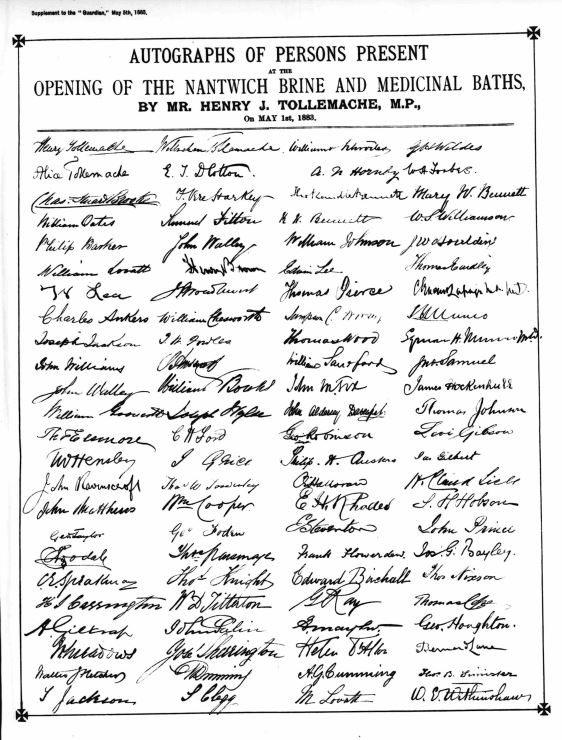
The bath complex was constructed and operated by a private company although access was gained through the now publicly owned Town Hall. The promoters of the baths certainly saw this as the start of something big, making grand claims that Nantwich could rival the long established spa towns like Driotwich and Buxton.
Much was made by the promotors of the medicinal qualities of the brine water:
“The marvellous curative effects of the Nantwich baths are usually perceived after a single trail, but even in cases of long standing a few baths have invariably afforded relief”.
Booklet titled “The Nantwich brine and medicinal baths : particulars of their curative properties and of brine treatment” printed 1883.
The Nantwich Guardian also provided a detailed description of the layout:
“A second corridor gives access to the private baths, five in number. Two of these are intended for the accommodation of first-class patients, and are elegantly fitted up with baths, lavatories and other necessary requirements. The second-class baths are also fitted up with couches, and the whole are warmed by steam pipes. Another corridor communicates with a second series of private baths intended for ladies, and adjoining these is the swimming bath, 50ft. by 30ft., with a depth of water extending gradually from 3ft. to 6ft. 4in.
Nantwich Guardian, 5th May 1883.
The company also offered brine spring water deliveries to any railway station in the country should you not be able to travel to Nantwich. A few years later, a much bigger project was undertaken with the conversion of a nearby mansion, Shrewbridge Hall into the luxury but now long lost “Brine Baths Hotel”. Perhaps Nantwich would become a renowned spa town after all?
The Town Hall and Brine Baths continued to play their role in Nantwich life for decades to come and like most things they had ups and downs. Countless lectures, exhibitions, silent films, lantern shows and concerts of all types were held at the hall.
Here’s a selection of advertisements for events held in the Town Hall. Click on the image for a closer look:
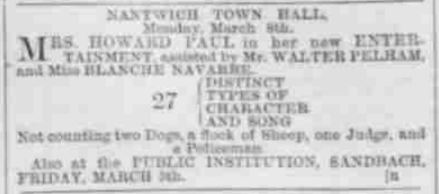
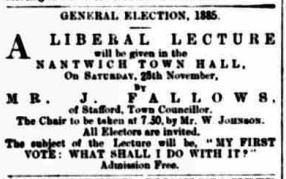
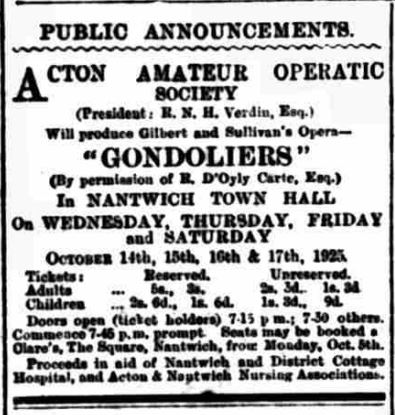
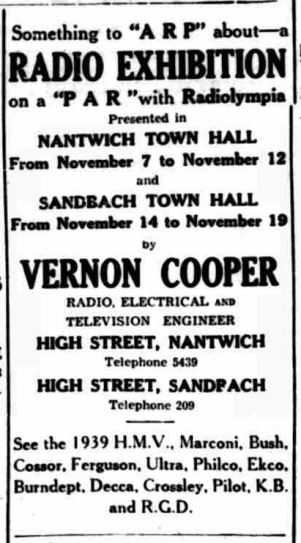
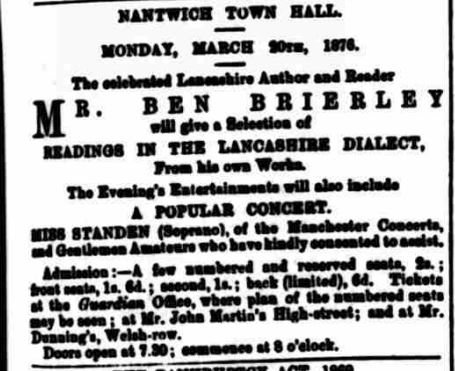
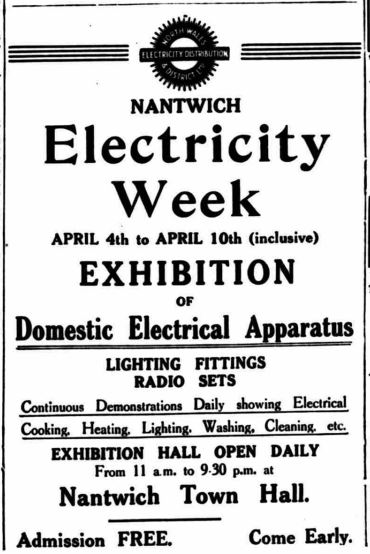
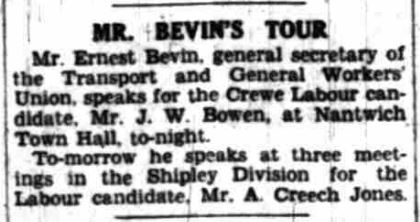
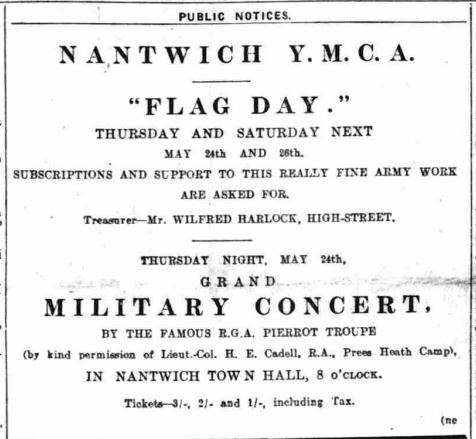
Part 3: Out with the old and in with the new.
The question of ownership comes up several times over the life of the hall and baths, switching several times between private companies, boards of trustees and local authorities. In 1910, the board of trustees offered the Urban District Council the opportunity to purchase the hall which they declined. It was sold to a private company later that year who promised to make improvements including the addition of a balcony in the main hall although the baths remained publicly owned.
“The whole place is quickly to undergo a very radical change, so that in future there will be no qualms about holding any kind of a function in the Town Hall, which will be made in every way convenient for a public gathering, and is to be beautifully decorated.
The company has a very substantial financial backing, and no expense is being spared to improve the building.”
Cheshire Observer, 3rd September 1910.
Just a few years later, however, the hall was offered ‘To Let’. Perhaps things were not going to plan.
The council were again offered the opportunity to purchase the hall in 1928. By this time, the baths were no longer in a fit condition and had been out of use for “some years”. The hall was offered at a price of £1,800 but the council was divided. On one hand, the hall was a liability, needing significant investment to bring it up to modern standards, on the other, it was felt that a town like Nantwich should have a hall to be proud of which was owned by the public. In the end, no decision was made and the hall remained the property of the Nantwich Town Hall Company Limited.
In 1930, notice was given to the council that the company would be closing the hall from 30th September.
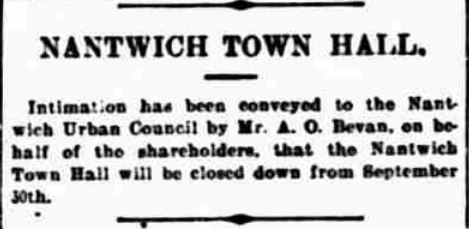
Eventually, the hall reopened and was used throughout the 30s and 40s for dances, concerts and meetings of all kinds. By the end of the Second World War, the hall was considered to be unsafe for public use. It was let out to various businesses and was used as store for motor parts and later a DIY and timber shop.
The Town Hall was demolished in 1972 as part of a wider scheme to regenerate the Snow Hill area of Nantwich. Entire streets were cleared to make way for the new waterlode by-pass and a parade of shops with a car park at the rear. The entrance to the car park was built on the site of the hall and baths and now forms part of the northern Waterlode by-pass.
